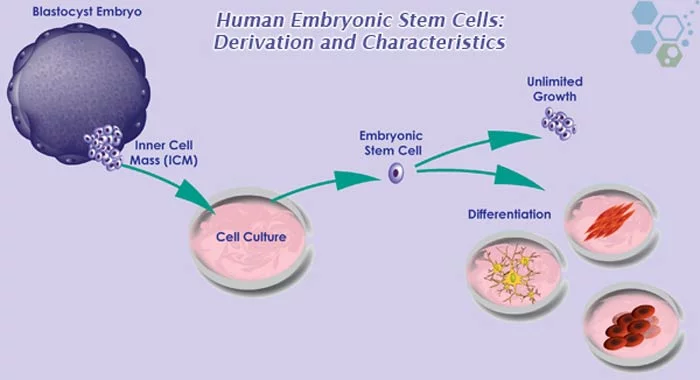
Long-term self-renewal in regen medicine refers to the capability stem cells have for self-replication through continuous division. The result of this natural regeneration cycle is common amongst certain types of non-specialized cells. The process of self-renewing usually occurs over a long period (that could even run for years), and the length and rate of self-renewal is determined on the specific stem cell variant.[1]
The term “long-term self-renewal” often refers to the ability of stem cells to reproduce themselves for prolonged periods throughout the life of an organism. This capability allows stem cells to provide a continuous source of cells for growth, development, repair, and replacement of damaged or worn-out tissues. Let’s discuss the different stem cells and their long-term self-renewal properties:
The self-renewal capability of stem cells is tightly regulated by intrinsic and extrinsic factors:
The understanding of stem cell self-renewal is essential in many clinical contexts. In Regenerative Medicine: By harnessing the self-renewal and differentiation properties of stem cells, The Regeneration Center is revolutionizing treatments for diseases like Parkinson’s, spinal cord injuries, liver cirrhosis, COPD, Diabetes and heart diseases.
Certain cancers contain cancer stem cells that contribute to drug resistance and recurrence. Understanding how to target these cells without harming normal stem cells will lead to better cancer treatments. Overall, the study of long-term self-renewal in stem cells provides insights into fundamental biological processes and holds promise for a variety of therapeutic applications.
The introduction of self-renewing hepatoblast like cells or “HBCs” from human multipotent and pluripotent stem cells “PSCs” that has helped us provide a high quality and stable supply of mesenchymal hepatocyte-like cells for regenerative medical applications.[2]
[1] ^ Deng, Y, X Zhang, X Zhao, Q Li, Z Ye, Z Li, Y Liu, et al. 2013. Long-term self-renewal of human pluripotent stem cells on peptide-decorated poly(OEGMA-co-HEMA) brushes under fully defined conditions. Acta biomaterialia, no. 11 (July 24). doi:10.1016/j.actbio.2013.07.017. https://www.ncbi.nlm.nih.gov/pubmed/23891809
[2] ^ Frelin, Catherine, Robert Herrington, Salima Janmohamed, Mary Barbara, Gary Tran, Christopher J Paige, Patricia Benveniste, et al. 2013. GATA-3 regulates the self-renewal of long-term hematopoietic stem cells. Nature immunology, no. 10 (August 25). doi:10.1038/ni.2692. https://www.ncbi.nlm.nih.gov/pubmed/23974957
If you've seen people take ice baths or cold showers and wondered if they're onto… Read More
Immunomodulation stands at the forefront of biomedical research, steering the immune system's ability to fight… Read More
Stem cell research leads the charge in medical innovation, heralding revolutionary advances in regenerative medicine.… Read More
The blood-brain barrier (BBB) is a crucial shield for the brain, regulating the entry of… Read More
While peptide bonds are fundamental to protein structure, their direct relationship with stem cells lies… Read More
When discussing cutting-edge cancer treatments, NK cell therapy stands out due to its unique approach… Read More